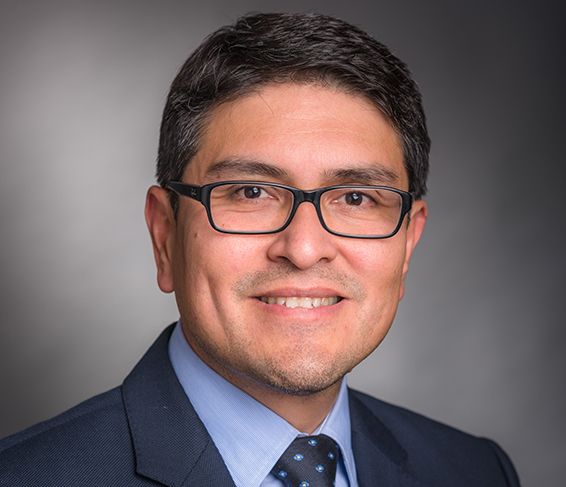Ibrutinib Plus Venetoclax May Be an Effective Treatment for Previously Untreated WM
Fast and durable response were seen in patients with Waldenström Macroglobulinemia who received the combination of ibrutinib and venetoclax.

Phase 2 findings presented during the 2022 ASH Annual Meeting show that ibrutinib (Imbruvica) in combination with venetoclax (Venclexta) was associated with a high number of durable treatment responses among a group of patients with previously untreated Waldenström macroglobulinemia.1
The study authors conducted a single-arm, multicenter phase 2 prospective trial with the goal of identifying a treatment regimen that is free from chemotherapy and induces deeper responses.
“[Bruton’s tyrosine kinase (BTK)] inhibitors are probably one of the most effective agents we have to treat patients with Waldenström’s,” lead study author Jorge J. Castillo, MD, clinical director of Bing Center for Waldenström Macroglobulinemia at Dana-Farber Cancer Institute in Boston, said during the presentation. “These therapies give us an indefinite duration of therapy. BCL2 antagonists have been used in the relapse setting; they have provided a high degree of efficacy; however, the duration of therapy is a little unclear at this time.”
Castillo noted that past study findings have shown that combining the BTK inhibitor ibrutinib with the BCL2 antagonist, venetoclax, has been shown to be safe and effective in patients with mantle cell lymphoma (MCL) and chronic lymphocytic leukemia (CLL). As a result, the investigators wanted to determine if similar outcomes were possible in Waldenström macroglobulinemia.
The investigators enrolled 45 patients (median age, 67 [range, 39-81]; 67% male) and placed them on a 24-cycle treatment regimen. Cycle 1 consisted of 420 mg of ibrutinib orally every day (QD). The ibrutinib continued into cycle 2 with a ramp-up regimen of venetoclax at 100 mg, 200 mg and 400 mg orally QD. Cycles 3-24 were 420 mg of ibrutinib and 400 mg of venetoclax orally QD.
The overall patient population achieved a 100% overall response rate, of which 40% (n=18) were deemed very good partial responses (VGPR) and 53% were partial responses (PR). Of note, the investigators established that there would need to be 19 VGPRs for the study to meet its primary endpoint.
The median time to a response was 1.9 months.
At a median follow-up of 11 months, the estimated 12-month progression-free survival (PFS) was approximately 92%. The estimated overall survival rate was approximately 95%.
There were 7 adverse events (AEs) of grade 4 or 5, with most AEs being grade 2 and 3. The most common grade 2 AEs were muscle/joint pain (n = 14) and reflux (n = 10). The most common grade 3 AE was neutropenia (n = 10).
Castillo noted that there was only one patient to experience disease progression, and that person had achieved a VGPR after 7 cycles. Two deaths occurred due to ventricular arrythmia. As Castillo explained, the findings showed that patients enrolled on the trial experienced high-than-expected rates of ventricular arrythmia.
This finding caused the investigators to conclude treatment earlier than they had intended.
Castillo noted that the investigators are continuing follow-up of the patients who have now been off therapy since March 2022 when another patient experienced a grade 2 cardiac-related event during a stress test.
However, Castillo said there is still value in continuing to study the combination.
“It could be that these patients really had a higher risk profile,” he said. “Most of these patients were older individuals over 65, they were men, they had other cardiac risks, including hypertension, prior history of arrythmias, prior history of coronary artery disease. So maybe it has something to do with that.
“There is always the idea in which ibrutinib and venetoclax can actually interact with each other and increase the serum levels, and that might induce these arrhythmias … But again, as of today, all that is just pure hypothesis. Now, I think what we see from these experiments, is that the combination is actually very powerful. So I think there is value on continuing [and] evaluating concurrent BTK and BCL2 inhibition.”
Castillo was asked to clarify the use of “very powerful,” as one of the moderators noted that there were no complete responses associated with treatment and a VGPR rate of approximately 40%, and why those findings seen in CLL trials perhaps did not translate to Waldenström.
“That was something that we were hoping to see,” he said. “But again, we [are] still unclear if complete responses should be the outcome that we should aim for in these patients. Now I want to remind everybody here that pretty much nobody completed their 24 months of therapy. We had about 40% of patients complete at least a year, [and] about 60% of patients did not complete a year of therapy. So these are the responses that I'm providing at this time, [which] is a median time of [venetoclax and ibrutinib] exposure for about 11 months. So there is always a possibility that we can get into deeper responses with longer treatments.”
Reference
Castillo JJ, Sarosiek S, Branagan R, et al. Ibrutinib and venetoclax in previously untreated Waldenström macroglobulinemia. Presented at: 64th American Society of Hematology Annual Meeting and Exposition; December 10-13, 2022; New Orleans, Louisiana. Abstract 231.










